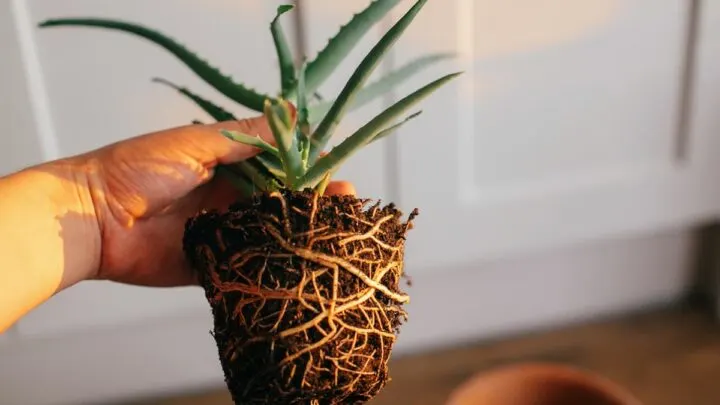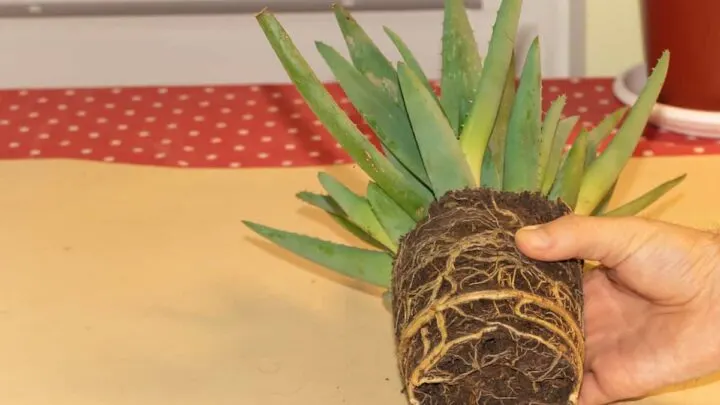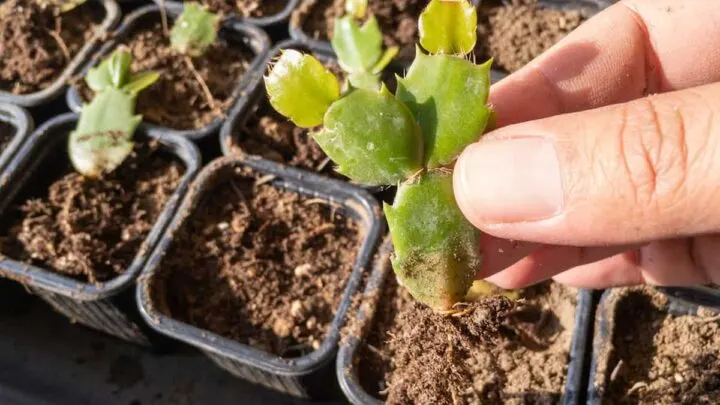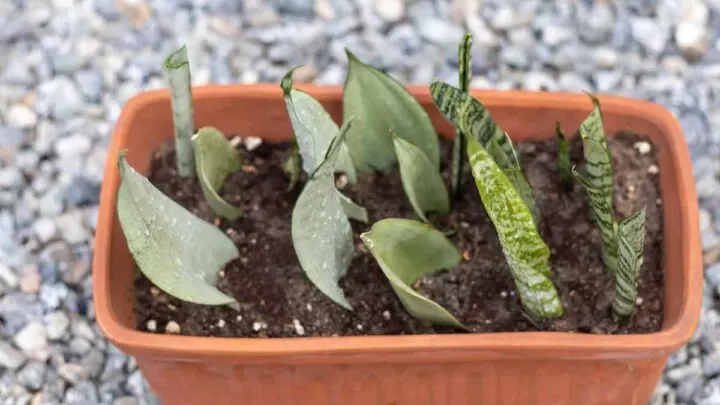Succulents are known to be low-maintenance, hardy plants. They can thrive on neglect and require water less frequently than most other common houseplants, making them a dream for those with a black thumb or forgetful mind. Some might wonder whether its low-maintenance reputation extends to the frequency of repotting. Do succulents like being root bound?
Succulents don’t like to be rootbound. Like other plants, running out of space in their pot can inhibit their growth and ability to transport water and nutrients to the leaves, leading to stunted growth and dying leaves and leaving your succulent looking less than impressive.
Read on to learn more about what it means to be root bound and how you can determine if your plant is a victim of being pot-bound.

What does it mean when a plant is root bound?
When people refer to a plant as “root bound” or “pot bound,” the plant’s root growth is restricted by its container. This can happen at various rates depending on the type of plant and how quickly it has grown, so quick-growing plants will need to be repotted more frequently than slow-growers (like many succulents) to avoid a root-bound situation.
Most plants need repotting yearly, but succulents and cacti are slightly different. They can be repotted every other year to enjoy a larger pot, fresh soil, and more room to grow.
How do I know if my succulent needs to be repotted?
Unfortunately, how plants signal to us that they’re unhappy can be a sign of so many other ailments: under watering, too much water, or a lack of nutrition can all be confused for symptoms of a pot-bound plant. Signs of a root-bound plant can be extremely obvious: roots coming out of the pot’s drainage hole or pushing the plant out of its pot are big signs that your plant has run out of room for its roots and is desperately trying to expand.
Other less obvious signs include yellowing or drying of the lower leaves, poor growth, and are quick to wilt even with regular watering. If your succulent has had a lot of growth since it last been repotted, you can check the bottom of the pot and peer into the drainage hole: if you see roots beginning to poke out, you may want to repot sooner rather than later.

Another reason to “repot” your plant, independent of root growth, is to freshen up the soil. This can be done if you notice the soil has grown to be hydrophobic or water-repellent. When soils are left to dry out too much (as is common with succulents), soil loses its ability to soak water, and instead, water pools on top of the soil and runs down the sides and out the drainage hole.
As one can imagine, this does nothing for hydrating the plants and could lead to under-watering symptoms despite efforts to keep the plant hydrated. If this is the case, remove the plant from the pot and remove as much old soil as possible from the roots.
Use fresh potting soil and replant it in the same pot. The fresh soil will not only readily accept water but should also give your plant a slight boost in nutrition to set off some new growth.
Do you have to repot succulents?
While nobody is out there policing whether or not your succulents have been repotted in the right amount of time, there is a need to repot regularly if you want to see growth.
However, some people like smaller succulents or simply do not want to keep acquiring progressively larger pots. Keeping your plant in a small pot restricts its growth, which some may desire. It’s not as simple as “set it and forget it,” or else you will still have the same issues that root-bound plants encounter.

If you’d rather control your plant’s growth, you can keep it in a small pot, but you’ll have to do some root excision regularly. The aerial parts of succulents can only grow as much as the root system grows, so there is often a sudden growth spurt when plants are repotted into larger containers.
To keep your plant small, you’ll need to prune some of the excess roots. Take care never to prune more than a third of the roots, and always use sharp, sterile scissors. You can start by removing any dried or damaged roots, then cut away older, lower roots.
Remember that pruning of any kind usually will encourage new growth, so you may find yourself regularly pruning the roots to keep your plant small. This may or may not be worth it, depending on how dead-set one is on maintaining a small plant.
How do you repot a succulent?
Repotting a succulent is not much different than repotting regular plants. There’s some forethought regarding repotting, as you don’t want the soil to be freshly watered or bone-dry. Aim to repot your plant when the soil is moderately dry.
Since succulents grow somewhat slowly, the average recommended time to repot is once every two years. Repotting at the start of the growing season (early spring) can benefit your plant by giving it additional room to grow at the time of the year it needs it most. Now to the process:

- Gently remove your plant from its current pot. Some root breakage will almost certainly happen, but don’t panic: this can help encourage branching root growth at the site of breakage.
- Try to tease the old soil away from the roots as best you can. You want your plant to be as bare-root as possible before entering its new soil and container. At this point, it’s good to check for any old or rotted roots. These will appear dry and discolored (healthy roots are firm and light in color), and sometimes they will be soft or slimy if they’re rotten. Remove these damaged roots using sterile tools.
- Size your pot up no more than 25% of the current pot size. Potting your plant in a pot too large can also have negative effects since your plant won’t be able to use all the water being stored in the soil, making root rot more likely. Make sure your pot has at least one drainage hole.
- It is time to repot your plant using fresh, well-draining soil.
- Add some of the fresh potting mix and then add your plant; firmly (but not too firmly) pack some soil around your plant so it is stable. Water well to encourage the healing process to begin.
After your plant has been placed in a new pot, there might be some wilting or general “sadness” in its appearance. This is normal, especially if your plant was very rootbound or had other issues that required cutting out some of the old roots. After about a week, depending on the size of your plant, it should bounce back and be happier than ever. You can resume your regular watering and care routine after repotting.
Final thoughts
Nobody likes to feel confined, and that applies to plants too! If you notice roots wiggling out the bottom of the pot or your plant looks sad and lacking new growth, it’s time to give your succulents room to stretch out.

Hi there, my name is Allie and welcome to my blog; GareningWithAllie!
Much of what you see written here is just our personal experiences with gardening. Along with the content I write here, there is also a unique collection of gardening topics covered by some of our close friends. I hope you find everything you read here to be helpful, informative, and something that can make your gardening journey the most lovely experience ever! With that said, Happy Gardening!
